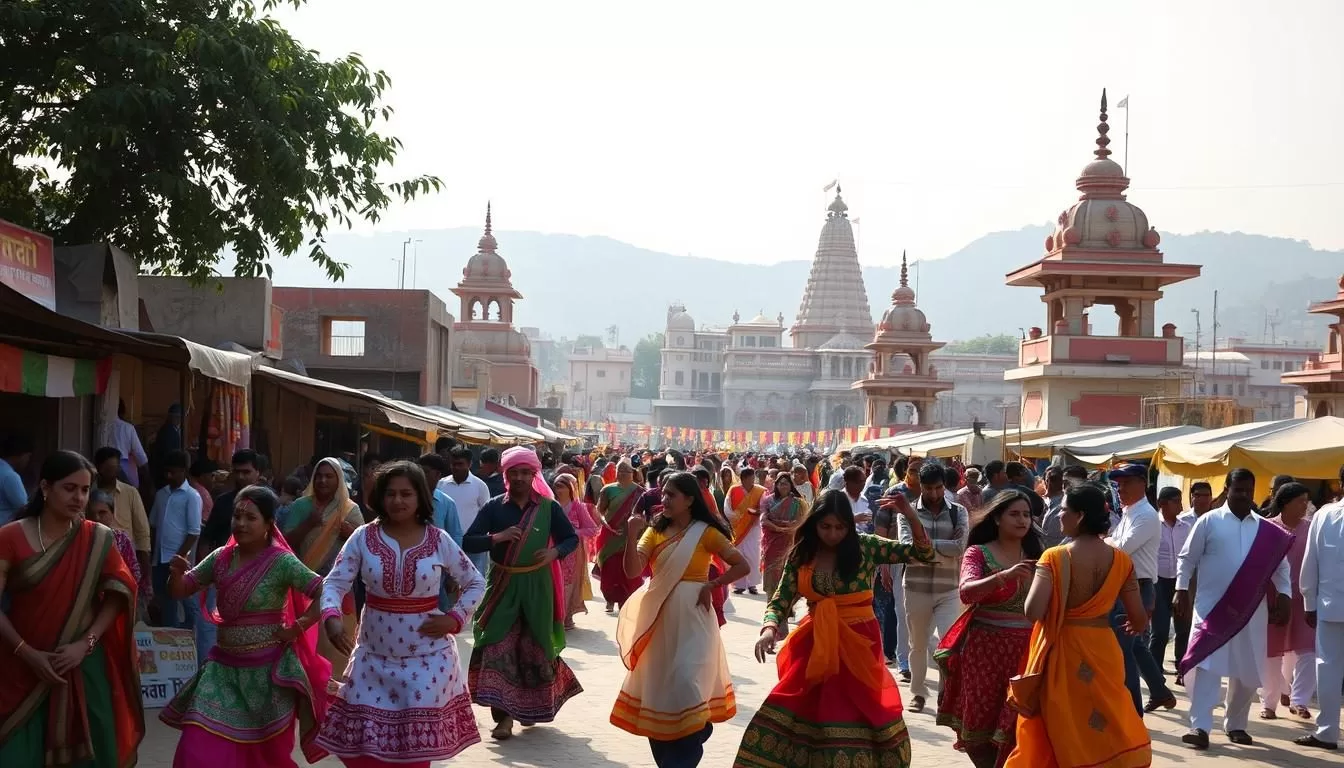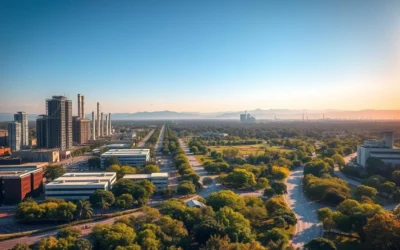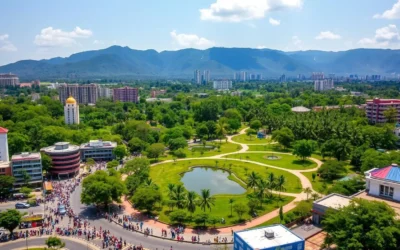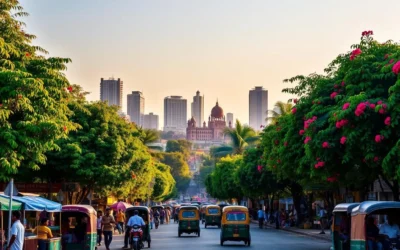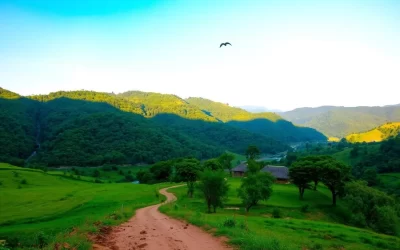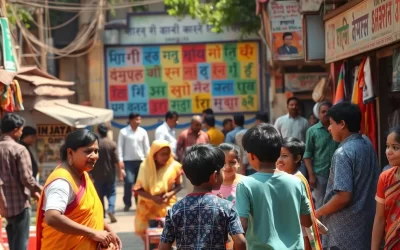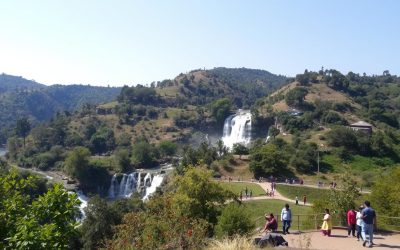✓ Accommodations✓ Flights✓ Rental Cars
You’re about to uncover the vibrant festival scene of Jharkhand, a state rich in tribal heritage and cultural traditions that will transform your travel experience.
Jharkhand’s festivals offer a unique window into the authentic tribal lifestyle, with celebrations that have remained largely unchanged for centuries. Timing your visit around these festival events will give you the most immersive cultural experience possible.
By experiencing Jharkhand’s rich culture, you’ll gain insight into the relationship between tribal communities and nature, agriculture, or spiritual beliefs, making your visit a memorable one at the right time.
The Cultural Tapestry of Jharkhand: A Festival Paradise
As you explore Jharkhand, you’ll discover that its festivals are an integral part of the state’s cultural fabric. The state’s rich heritage is reflected in the numerous celebrations that take place throughout the year, offering a glimpse into the community‘s way of life.
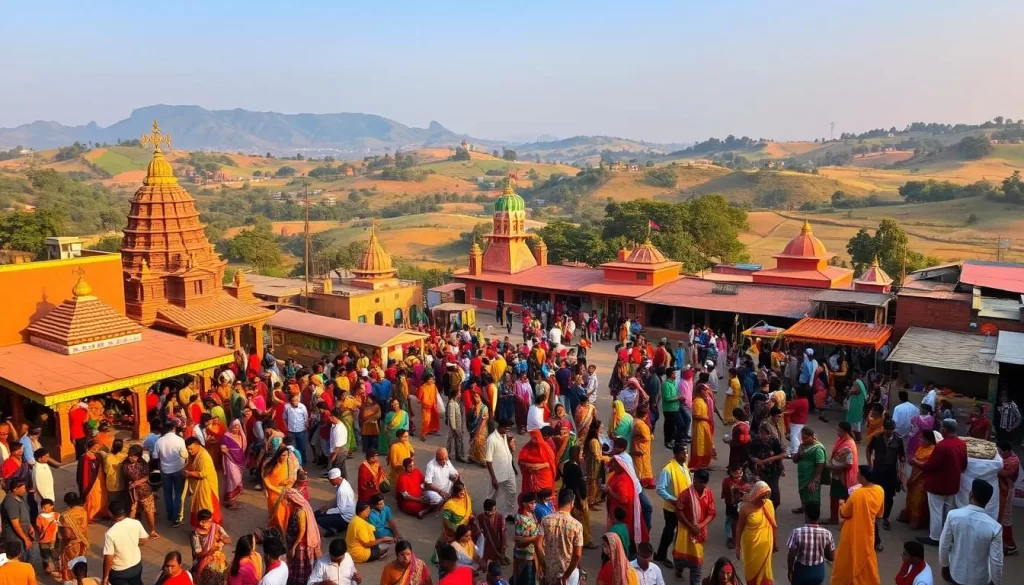
The Tribal Heritage of Jharkhand
Jharkhand’s tribal heritage is a significant aspect of its cultural identity. The state’s indigenous communities have a rich tradition of storytelling, music, and dance, which are showcased during various festivals. These events provide a unique opportunity to experience the local culture firsthand.
The tribal communities in Jharkhand take great pride in their heritage, and their festivals are a testament to this. By participating in these celebrations, you’ll gain a deeper understanding of the community‘s values and traditions.
| Festival | Description | Significance |
|---|---|---|
| Sarhul | Celebration of nature’s revival | Marks the beginning of spring |
| Sohrai | Winter harvest festival | Celebrates the harvest season |
| Chhath Puja | Devotion to the Sun God | Signifies the importance of solar worship |
Why Festivals Matter in Jharkhand’s Cultural Identity
Festivals play a vital role in preserving Jharkhand’s cultural heritage. They serve as a platform for the community to come together, share their traditions, and pass them down to future generations. By participating in these celebrations, you’ll experience the rich culture of Jharkhand and gain a deeper appreciation for its heritage.
The festivals in Jharkhand are not just entertaining events; they are an integral part of the state’s identity. They reflect the community‘s connection to their land, their traditions, and their way of life.
Sarhul: Celebrating Nature’s Revival
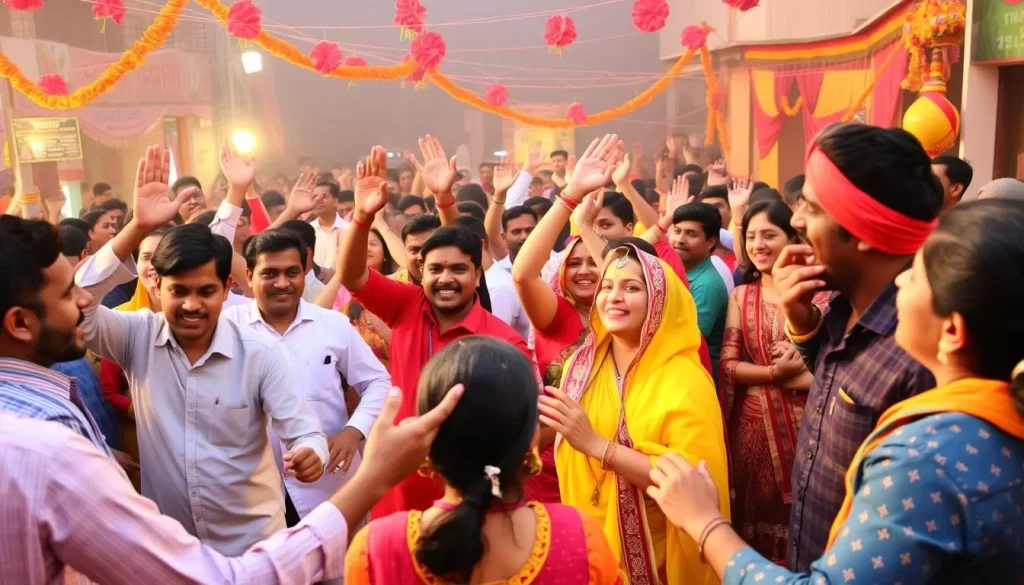
As you explore the vibrant cultural landscape of Jharkhand, you’ll encounter the Sarhul festival, a joyous celebration of nature’s revival. This significant event is a testament to the region’s deep-rooted connection with the natural world.
The Significance of Sal Flowers
The Sarhul festival is intricately linked with the blooming of Sal flowers, which symbolize the arrival of spring and new life. The flowers are considered sacred and are used in various rituals and ceremonies during the festival.
Rituals and Ceremonies
During Sarhul, the people gather at designated places of worship to experience the joy of communal celebration. They dance and sing traditional songs that have been passed down through generations, creating a sense of unity and connection with their heritage.
When and Where to Experience Sarhul
You can plan your visit to Jharkhand during March or April to experience Sarhul, as the exact dates vary according to the tribal calendar and the blooming of Sal flowers. Ranchi, the capital city, offers the most accessible and vibrant Sarhul celebration, though the festival is observed throughout the tribal regions of the state.
By participating in Sarhul, you’ll be able to step outside the modern world and appreciate a simpler, more nature-connected way of life that has sustained these communities for centuries.
Sohrai: The Winter Harvest Festival
In the heart of Jharkhand, the Sohrai festival is a joyous celebration of the winter harvest. Celebrated with great enthusiasm, especially in the Hazaribagh district, Sohrai marks the completion of paddy harvesting and is a time for the community to come together.
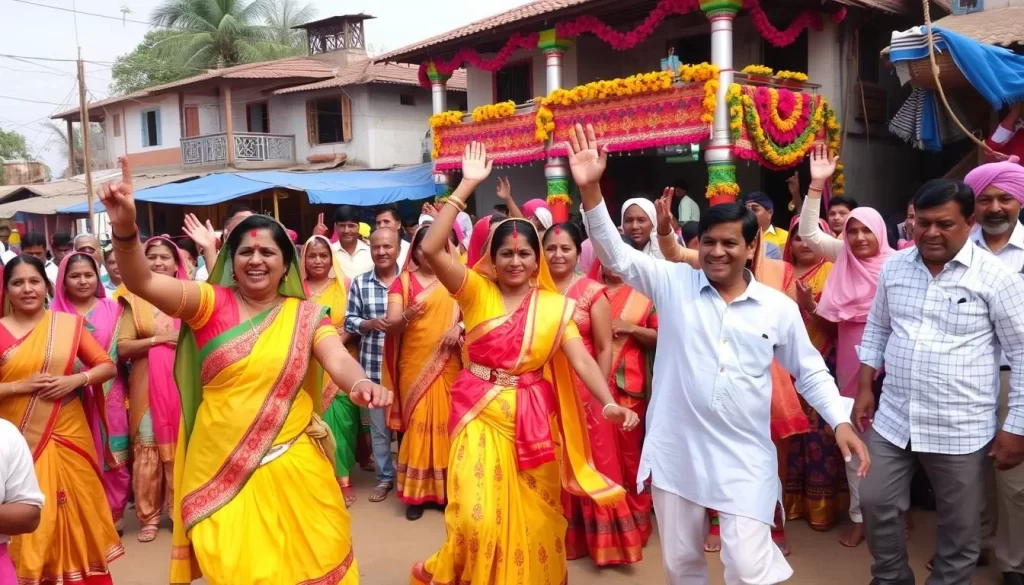
Cattle Worship and Agricultural Significance
The Sohrai festival holds significant importance for the agricultural community, as it involves the worship of cattle, which are crucial for farming. The festival is a time to appreciate the role of cattle and livestock in their agricultural practices. The community comes together to sing traditional songs, expressing gratitude for the successful harvest.
The Famous Sohrai Art
One of the highlights of the Sohrai festival is the traditional Sohrai art, where women decorate their homes using natural colors mixed with mud. The intricate murals and designs on the walls are a testament to the artistic skills of the local women. This art form is not only aesthetically pleasing but also carries cultural significance.
Best Places to Witness Sohrai Celebrations
The Hazaribagh district offers the most authentic and elaborate Sohrai celebrations. Visitors can experience the festival’s true essence by visiting villages in this region. You’ll be treated to the spectacular sight of freshly painted homes and the vibrant atmosphere filled with traditional songs. To make the most of your visit, consider arranging a tour with a local guide who can provide cultural insights and facilitate interactions with the community.
You’ll want to visit Jharkhand in November to experience the full splendor of Sohrai, when the winter harvest festival coincides with the completion of paddy harvesting. The rural communities are particularly welcoming during this time, and photography enthusiasts will find endless inspiration in the colorful murals and festive activities.
Chhath Puja: Devotion to the Sun God
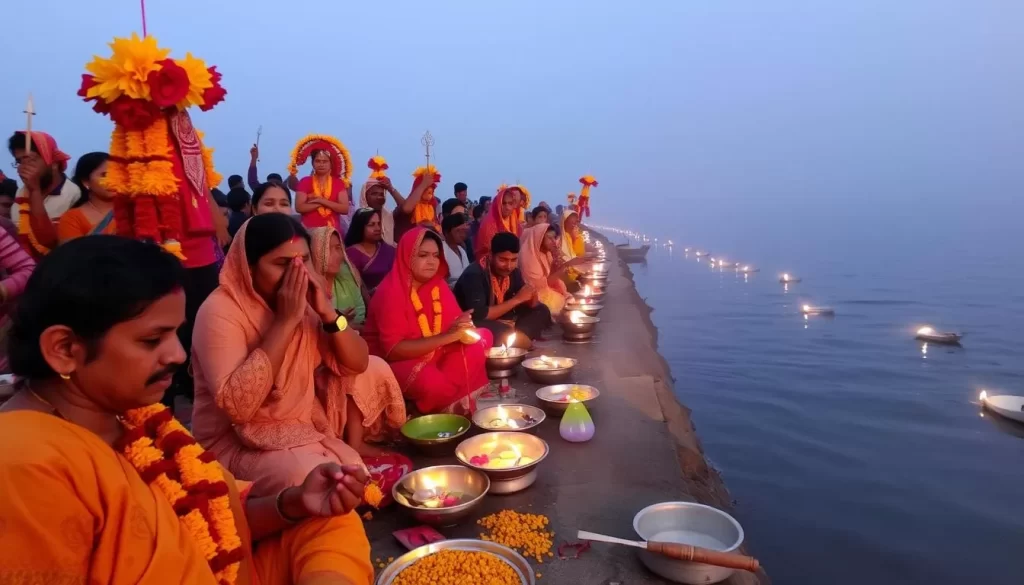
In the heart of Jharkhand, the Chhath Puja festival unfolds as a mesmerizing display of devotion, where the sun god is worshipped with fervor. This four-day celebration is a testament to the region’s rich cultural heritage and spiritual depth.
The Four-Day Ritual Process
The Chhath Puja rituals span four days, involving rigorous fasting, prayers, and offerings to the sun god. Devotees begin by purifying themselves through fasting and then proceed to offer prayers to the setting sun on the first day, followed by prayers to the rising sun on the final day. The process involves standing in water, offering arghya (water offerings), and performing various rituals that signify devotion and gratitude.
Traditional Foods and Offerings
Traditional foods play a significant role in Chhath Puja, with devotees preparing Thekua and other local delicacies as offerings to the sun god. These offerings are carefully arranged in bamboo baskets and presented during the rituals. The emphasis on traditional cuisine adds a layer of cultural richness to the festival, highlighting the community’s connection to their heritage.
Experiencing Chhath at Jharkhand’s Rivers and Ponds
You’ll find Chhath Puja to be one of the most visually spectacular popular festivals in Jharkhand, especially at dawn when hundreds of devotees gather at rivers and ponds across the state. Locations like the Swarnrekha River in Ranchi and Damodar River in Dhanbad become sacred spaces during the festival. The sight of devotees standing waist-deep in water, offering prayers to the rising sun, is truly breathtaking.
The banks of these water bodies transform into vibrant community spaces, with colorful decorations, devotional music, and the golden glow of oil lamps creating an atmosphere of profound spirituality. As you witness the culmination of the festival at sunrise on the final day, you’ll be moved by the devotees’ dedication, having fasted for 36 hours, as they complete their prayers in the water.
Karma Festival: Honoring the Karam Tree
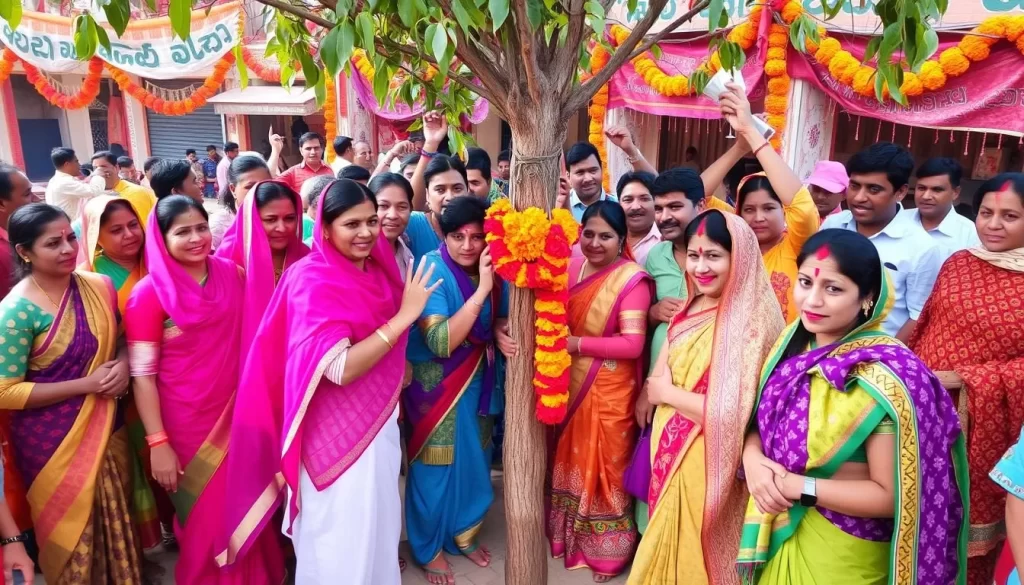
Experience the Karma Festival, a unique celebration where the local community pays tribute to nature and the Karam Tree. This significant event is a testament to the rich cultural heritage of Jharkhand’s tribal communities.
The Legend Behind the Festival
The Karma Festival is rooted in a legend that tells the story of the Karam Tree’s significance. According to local lore, the tree is revered for its association with fertility and prosperity. The worship of the Karam Tree is a way of expressing gratitude for the bounty of nature.
The story is passed down through generations, and during the festival, elders share the tale with the community, reinforcing the cultural significance of the Karam Tree.
Traditional Karma Dance and Songs
The Karma Festival is characterized by traditional dances and songs that are performed around the Karam Tree branch. The people gather in a circle, and unmarried women who have fasted for the day carry the sacred branch in procession to the festival ground.
The dances are an integral part of the celebration, symbolizing the community’s connection with nature and their cultural heritage.
Participating in Karma Celebrations
When you participate in the Karma festival, you become part of a vibrant cultural experience. You can witness the ceremonial cutting of the Karam Tree branch, watch the procession, and even join in the circular dances around the decorated branch.
It’s an opportunity to understand the local culture and the importance of preserving traditional practices. The festival carries a powerful environmental message, emphasizing the need to worship and protect trees for human survival.
Tusu Mahotsav: The Festival of Unmarried Girls
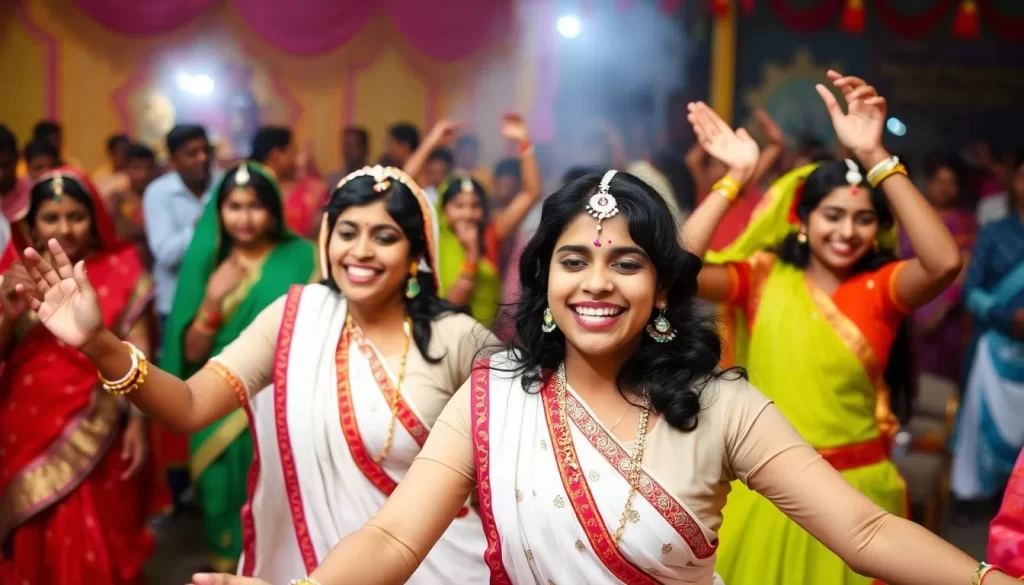
In the heart of winter, Jharkhand’s Tusu Mahotsav brings forth a kaleidoscope of colors, music, and dance, making it a must-experience festival. Celebrated in January, this popular festival is a significant event in the region’s cultural calendar, particularly for unmarried girls who play a central role in the festivities.
Clay Idols and Bamboo Decorations
The Tusu Mahotsav is known for its vibrant dance performances and elaborate decorations. Unmarried girls create beautiful clay idols and intricate bamboo structures, showcasing their creativity and skill. These decorations are a hallmark of the festival, adding to the overall festive atmosphere in the area.
Traditional Foods of Tusu
No festival in Jharkhand is complete without traditional foods, and Tusu Mahotsav is no exception. The celebrations feature a variety of local delicacies that are both delicious and unique to the region. Visitors can enjoy these traditional foods while immersing themselves in the festive spirit.
Best Locations for Tusu Fairs and Exhibitions
The best locations to witness authentic Tusu celebrations are in the Bundu, Tamar, and Raidih areas. These regions host special Tusu fairs and exhibitions where you can see collections of elaborately decorated Tusu idols and bamboo structures. The competitive aspect of these celebrations adds excitement, as communities often vie to create the most beautiful Tusu decorations.
To fully experience Tusu Mahotsav, consider visiting Jharkhand in January. You can enjoy the dance performances, explore the local markets, and participate in the festive atmosphere. Staying in a homestay in one of the celebration areas can provide a more immersive experience.
Aadi Mahotsav: Showcasing Tribal Arts and Crafts

Immerse yourself in the rich cultural tapestry of Jharkhand’s tribal communities at Aadi Mahotsav. This vibrant festival is a celebration of the tribal way of life, showcasing their rich heritage through various art forms, crafts, and cultural performances.
Tribal Crafts and Artifacts on Display
The festival features an array of tribal crafts and artifacts that reflect the skill and creativity of Jharkhand’s tribal communities. You can witness traditional craftsmanship in weaving, pottery, and metalwork, among other artisanal crafts. The tribal artisans showcase their work, providing a glimpse into their traditional life.
Culinary Delights at the Festival
Aadi Mahotsav is not just about visual delights; it’s also a treat for your taste buds. The festival offers a variety of traditional culture-specific cuisine that lets you experience the authentic flavors of Jharkhand’s tribal communities. From local delicacies to traditional cooking methods, the culinary aspect of the festival is a significant draw.
Cultural Performances and Events
The festival includes a range of cultural performances that highlight the rich performing arts traditions of Jharkhand’s tribal communities. You can enjoy traditional dance forms, music, and theater, all of which are integral to the tribal cultural identity. These performances are not just entertaining but also provide a window into the history, myths, and values of the tribal communities.
Bhagta Parab: Displaying Courage and Faith
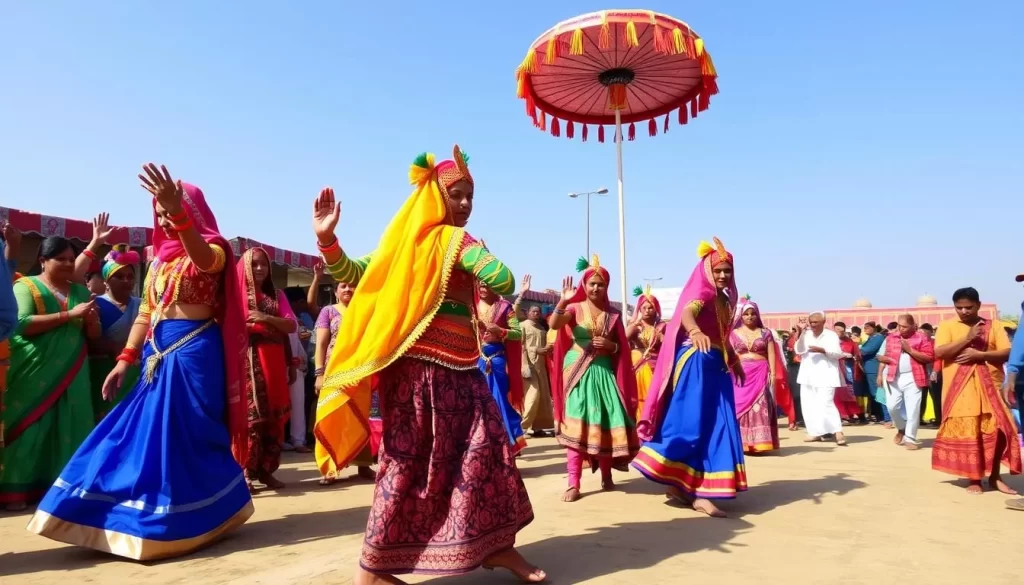
Bhagta Parab, a vibrant celebration in Tamar, Jharkhand, is an unforgettable experience that combines faith, courage, and artistic expression. This unique festival is a testament to the region’s rich cultural heritage.
The Unique Ritual of Walking on Devotees
One of the most striking aspects of Bhagta Parab is the ritual where devotees tie themselves to one end of a long wooden pole hanging from a vertical wooden pole. The other end is tied with a rope tightened by people. As the devotees perform creative dance forms while suspended in the air, it’s a breathtaking spectacle.
Chhau Dance and Acrobatic Performances
The festival features spectacular Chhau dance performances that combine martial arts, acrobatics, and theatrical storytelling. Performers suspended from long wooden poles execute intricate dance movements, demonstrating both artistic skill and physical courage. These aerial performances create a dramatic visual spectacle, synchronized with traditional drums and wind instruments.
The festival concludes with the most elaborate and energetic performances, building to a crescendo that leaves spectators amazed by the dancers’ stamina, skill, and spiritual dedication. As you witness Bhagta Parab, you’ll be struck by the unique blend of faith, courage, and artistic expression that defines this celebration in Tamar, Jharkhand, coming to a dramatic end.
Jharkhand, India: Top Festivals to Check Out When Visiting – Seasonal Guide
As you plan your visit to Jharkhand, India, understanding the seasonal festivals can enhance your cultural experience. The state’s diverse festivals are spread throughout the year, offering a unique glimpse into the local traditions and customs.
Spring and Summer Festivals
During the spring and summer months, Jharkhand comes alive with various festivals. Sarhul, celebrated in spring, marks the beginning of the new year for many tribal communities, honoring the sal tree with rituals and dances.
Monsoon Festivals
The monsoon season brings its own set of celebrations, including the Karma Festival, which honors the Karam tree. This period is characterized by lush green landscapes, making it a picturesque time to visit.
Winter Celebrations
Winter is a particularly festive time in Jharkhand, with October-November bringing Sohrai, the harvest festival that honors cattle. The month of October-November also features Chhath Puja, a dramatic four-day festival dedicated to the Sun God. In January, Tusu Mahotsav celebrates the harvest season with vibrant decorations and rituals.
| Season | Festivals | Highlights |
|---|---|---|
| Spring | Sarhul | Sal tree rituals and tribal dances |
| Monsoon | Karma Festival | Honoring the Karam tree |
| Winter | Sohrai, Chhath Puja, Tusu Mahotsav | Cattle honoring, Sun God rituals, harvest celebrations |
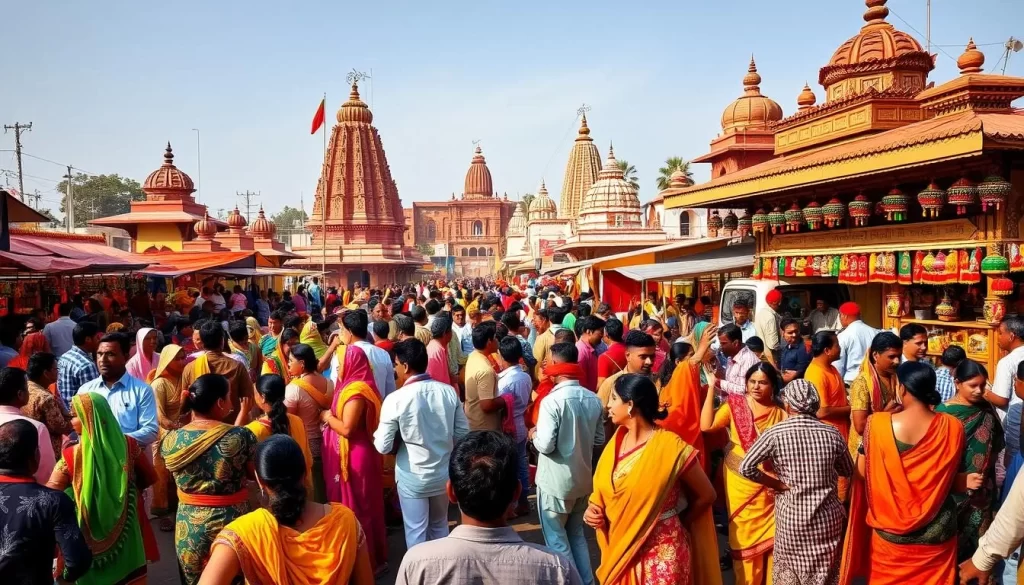
The winter festival season, spanning from October to February, is packed with Jharkhand’s most elaborate festivals, many celebrating the harvest season and the completion of the agricultural year. The comfortable climate during this time allows for extended outdoor celebrations.
Practical Tips for Festival Tourism in Jharkhand
To make the most of your visit to Jharkhand, timing is everything, especially when it comes to festivals. The state hosts a plethora of festivals throughout the year, with September being a particularly festive month. If you’re planning to experience the rich cultural heritage of Jharkhand, consider visiting between October and February when the weather is pleasant.
When attending tribal festivals, it’s beneficial to hire a local guide who can provide cultural insights and facilitate interactions with the community. Dress modestly, covering your shoulders and knees, as a sign of respect, especially in rural areas.Plan your transportation in advance, as many festivals take place in rural areas; flying into Birsa Munda Airport in Ranchi and arranging private transport is often the most convenient approach.
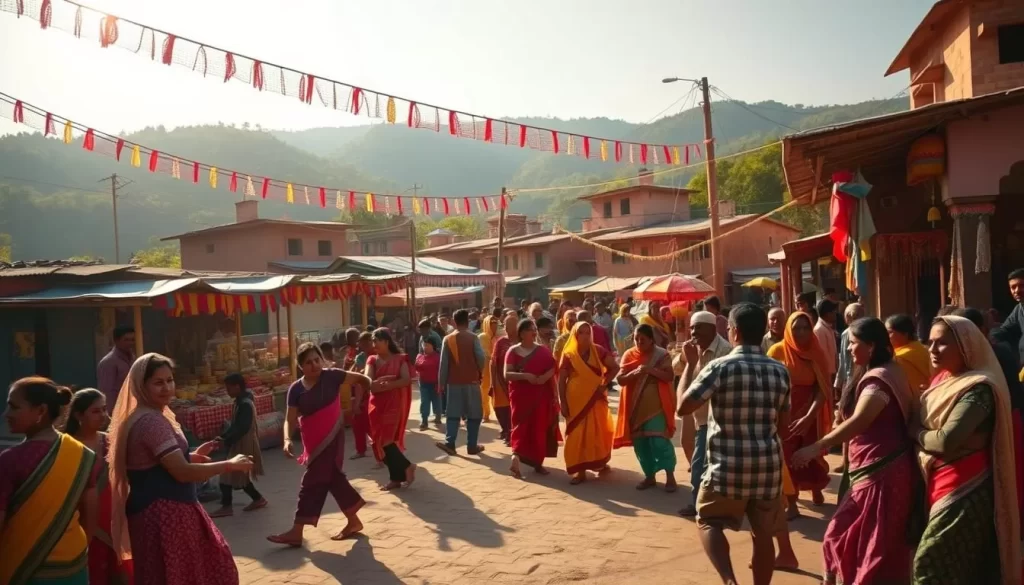
You should alsobook your accommodations well in advance, as options can be limited during major festivals. Being respectful of local customs, such as removing your shoes when entering temples or homes, will enhance your experience. By timing your visit right, such as during theOctober-November periodwhen popular festivals like Sohrai and Chhath Puja take place, you’ll get a deeper understanding of Jharkhand’s cultural diversity.
Conclusion
By participating in Jharkhand’s festivals, you’ll gain a deeper understanding of the region’s culture and the significance of these celebrations in the life of its people. You’ll experience Jharkhand at its most vibrant and authentic, witnessing traditions that have been preserved for centuries. Timing your visit to coincide with these festivals will make you a part of the community, connecting you with the local way of life at this time. This enriching experience will be a memorable part of your journey.
The above is subject to change.
Check back often to TRAVEL.COM for the latest travel tips and deals.
